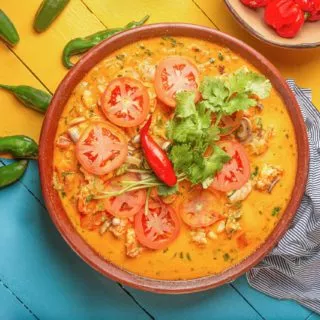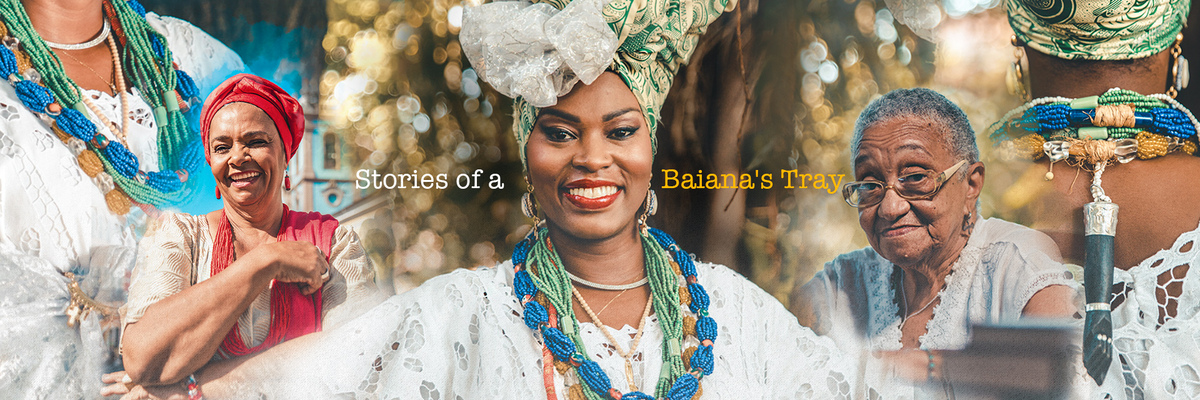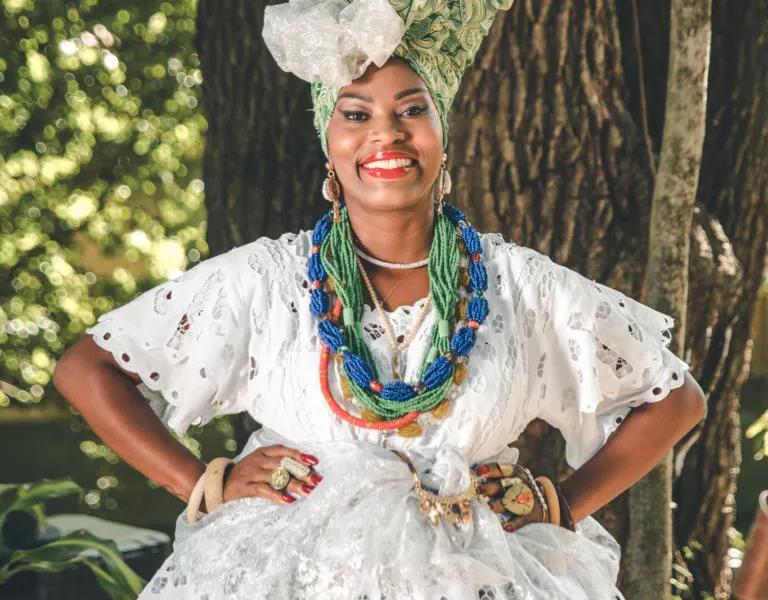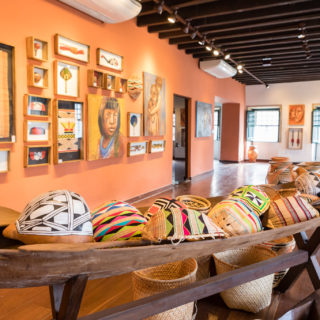
Baiana Day will have web series on the internet in honor of the Bahian culture symbol

Wherever you go, there they will be. It is normal that a Baiana de Acarajé is the first person a visitor has contact with when arriving in Salvador. They are the ones that present the city, the customs and the flavors of Salvador. Baianas de Acarajé are Bahia’s historical and affective memory.
The Baiana de Acarajé National Day is celebrated annually on November 25. A tribute to the historical and cultural importance of the figure of Baiana de Acarajé, name given to women who are dedicated to the production and sale of this typical Bahian delicacy. The date symbolizes the recognition of the African ancestors legacy importance in the historical process of our society formation and the patrimonial value of universal cultural complex.
To celebrate this date, a web series will be launched on YouTube, social networks of Visit Salvador da Bahia and on our website. Divided into three episodes, it makes a true immersion in the history, customs, clothing, religion and symbols linked to the Baianas, which are considered cultural heritage by the National Institute of Artistic and Historical Heritage (IPHAN).
According to a survey by the Baianas de Acarajé Association (ABAM), Salvador has 3,500 Baianas and Baianos scattered throughout the city. Rita Santos, one of the 12 national coordinators of the Baianas de Acarajé Association and who is leading the Baianas de Acarajé Memorial, explains:
“It all started in the symbolic. The enslaved women sold acarajé to buy their freedom. In the second stage, the Baianas went to the streets to sell acarajé to do their obligations at the terreiros (Candomblé Houses), usually the Oiá daughters (it couldn’t be any person). Over time, the Baiana realized that, by selling acarajés, she could support the family, it was when the acarajé went to the street and became commercial. It is commercial, but in my head it is still symbolic because it still belongs to the terreiro, it remains sacred. The acarajé is an offering to Iansã and the abará is an offering to Xango”.
In the beginning, all the people who produced and sold acarajé were initiated in candomblé, in a practice restricted to women, usually Daughters of Saint (Filhas de Santo) dedicated to the cult of Xangô and Oiá (Iansã). In order to fulfill their “obligations” to the orixás during the colonial period, the free black women or earning black women prepared the delicacies and took to the streets at night to sell them, starting this tradition. To this day, the great majority of Baianas go to the street only from 5pm on.
According to the griô Nancy Sousa, better known as Dona Cici, this time of transition from the enslaved human being to the free being has much to do with the Baianas de Acarajé history, as it was the way to make money. In fact, she says that some ways of tying head scarves and turbans by the Baianas meant the nation they were part of.
Acarajé History
Dona Cici devotes her time to passing on Afro-Brazilian ancestral wisdom. She knows a lot about the culture of the orixás and our history. And it was in the garden of the Pierre Verger Foundation that she told about the Acarajé Myth.
In the book “Cooking Stories – Recipes, Stories and Myths of Afro-Brazilian Dishes”, researcher and photographer Josmara B. Fregoneze, Afro-Brazilian culinary expert Marlene Jesus da Costa and Dona Cici tell that many of the Afro-Bahian dishes served today – especially on festive occasions – and restaurants, originated in religious foundations linked to candomblé.
The acarajé of West African Yoruba (Togo, Benin, Nigeria, Cameroon) is similar to Arab falafel which is made from a crushed and fried chickpea pasta. In Yoruba language, “Àkàrà” means “fireball”, while “je” means “eat”, so “acarajé” means “eat fireball”.
The story tells that every day Oxum prepared Xangô’s food and Iansã carried on her head the pan containing the king’s secret to his palace. One day, Oxum called Iansã and asked her to take the pan but not to look inside. Halfway to King Xangô’s palace, curiosity was stronger and Iansã opened the lid and, very frightened, saw the flames of fire rise high. Quickly, she closed the pan and continued on her way. Arriving at the palace, she knelt before Xangô and lowered the pan, looking away from the king. Xangô asked three times if she had seen what the king eats. Iansã said yes. Then Shango said, “The women who know my secret become my wives.”
Baiana’s Tray
There are many ways to better know the historical, social, religious, aesthetic and gastronomic values that compose the Baianas de Acarajé trade. The Baianas’ clothing also constitutes a strong element of identification of this occupation that, for many of them, symbolizes the Baianas’ religious initiation.
On the Baiana’s tray must have: acarajé, abará, vatapá, caruru, shrimp, salad and pepper, besides the cocada, bolinho de estudante and a passarinha. Even so, all this is up to each Baiana. Rita Santos explains that, chronologically, in the beginning, only the “dumpling” with the pepper was sold. Then vatapá and shrimp were added. The caruru and the salad became a custom about 30 years ago. Therefore, some Baianas don’t sell these last two add-ons, because they don’t think it makes sense.
“I would like to rescue other things that used to be on the trays such as pé de moleque, fish, acaçá, grandma’s farinha, there were many other things on the Baiana’s tray in the past”, Rita Santos says.
Clothing and Religiosity Around the Baiana
The Baiana’s clothing also brings together visual elements of European Baroque through its many embroidery and lace. It is a multicultural garment of palm oil, which involves various elements such as the starched cloth, the traditional richelieu, the scent of lavender, the fig and the conch earrings, added to the Baiana joyful way of being.
These so-called “dress gowns” are most commonly used on popular holidays, processions and in receptive. They also get Pano da Costa (a kind of fabric), and today they have even added glittering cloths, in addition to the traditional figs, larger necklaces, bracelets and rings.
The Baiana de Acarajé Ana Cássia, who has her tray at Farol da Barra, is one of those who are proud of what they do and of the tradition of her family, where her grandmother and mother were Baianas. She goes all adorned to her tray with petticoat and all.
It is a sanitary surveillance standard that anyone who works with food has to be in white. Even following the rules, in the days of each saint, we can notice that some Baianas make some changes in their clothing, adding colors and symbols in reverence to the orixás, remembering that this is not a rule, it’s up to each one.
For example, on Tuesdays, Ogum Day, they wear dark blue and sometimes green; on Wednesdays, Iansã Day, they wear red; on Thursdays, Oxóssi’s day, they use green and so on for each orixá. There are the Baianas that always put chita prints, which were the clothes that the first Baianas de Acarajé wore.
A trade from mother to daughter
The delicacy production and trade activity is predominantly female, and it is found both in public spaces, especially squares, streets, city fairs and waterfront, as well as in large parties and other celebrations that mark the culture of the city.
The Baiana’s commercial point is licensed in the City Hall, so it can’t be sold to another person, being passed from mother to daughter. But even before all the trade legalization, it was already a tradition for the tray to be passed to a relative. Two very popular Baianas are examples. Dinha, in Rio Vermelho and Tânia Bárbara Neri, in Farol da Barra. Learn these and other stories at this link:
But as every rule has its exceptions, many Baianas didn’t have a daughter but a son, and the sons followed in their mother’s footsteps, as this is a family trade. According to Rita Santos, there is a couple at Farol da Barra whose families, both of the wife and husband, are formed by Baianas de Acarajé. Today, married, both continue with the profession.
Today, it is not a rule that they are candomblé people either. The Baiana may even be of another religion, as long as she respects the tradition and she follows the decree of IPHAN, where the Baiana must be in the street in gown, skirt and headscarf and the tray needs to be organized. The sanitary surveillance also releases the beads and earrings.
That’s why the Baianas de Acarajé represent the art and energy of Bahia. The famous acarajé carries doses of joy and ancestry. In addition to food and sustenance for many families, it has an important symbolic character.
By Fernanda Slama
Content Coordinator
Note:
Book: “Cooking Stories – Recipes, Stories and Myths of Afro-Brazilian Dishes” with photos by Pierre Verger. It was written by Josmara B. Fregoneze, Marlene Jesus da Costa and Nancy Sousa, better known as Dona Cici.

















